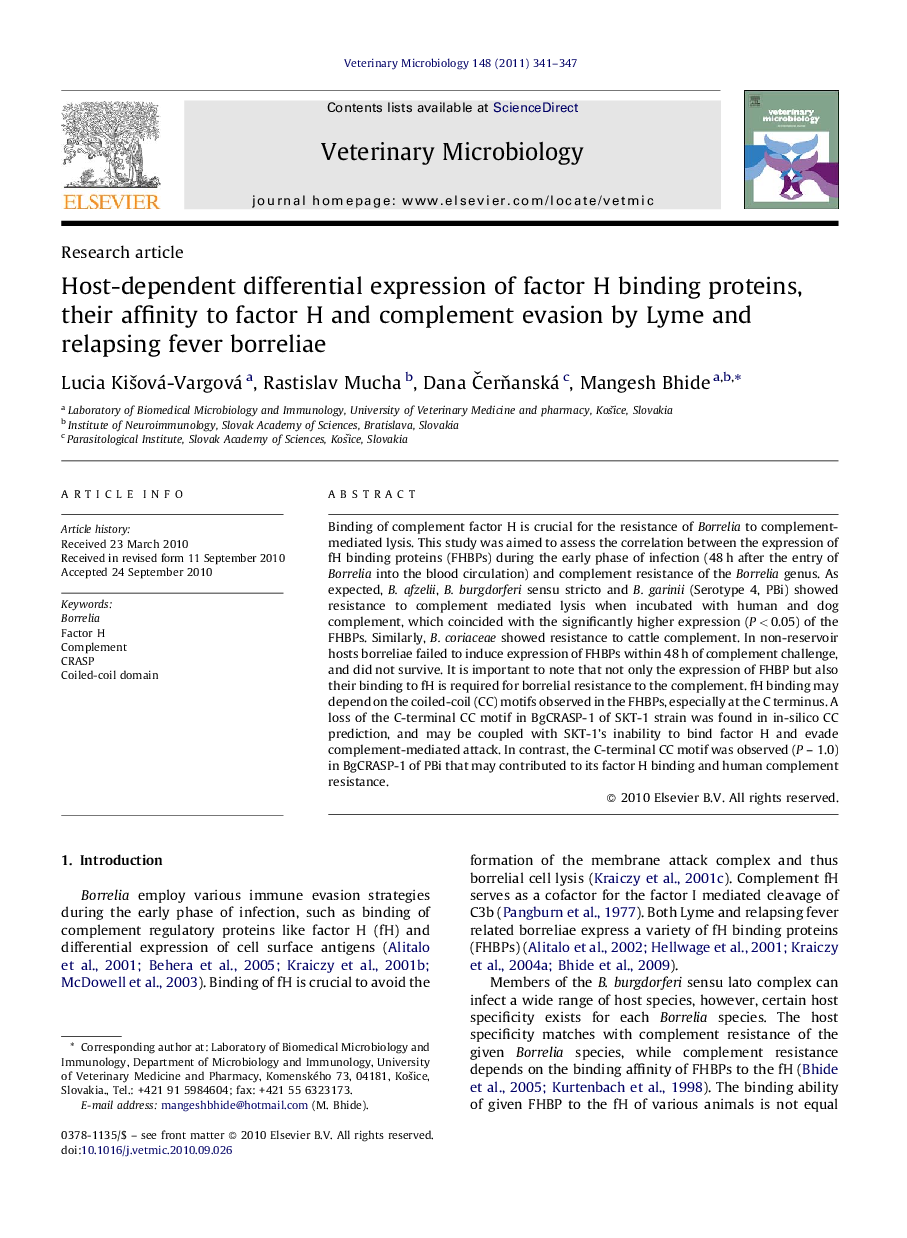| کد مقاله | کد نشریه | سال انتشار | مقاله انگلیسی | نسخه تمام متن |
|---|---|---|---|---|
| 2467717 | 1555404 | 2011 | 7 صفحه PDF | دانلود رایگان |

Binding of complement factor H is crucial for the resistance of Borrelia to complement-mediated lysis. This study was aimed to assess the correlation between the expression of fH binding proteins (FHBPs) during the early phase of infection (48 h after the entry of Borrelia into the blood circulation) and complement resistance of the Borrelia genus. As expected, B. afzelii, B. burgdorferi sensu stricto and B. garinii (Serotype 4, PBi) showed resistance to complement mediated lysis when incubated with human and dog complement, which coincided with the significantly higher expression (P < 0.05) of the FHBPs. Similarly, B. coriaceae showed resistance to cattle complement. In non-reservoir hosts borreliae failed to induce expression of FHBPs within 48 h of complement challenge, and did not survive. It is important to note that not only the expression of FHBP but also their binding to fH is required for borrelial resistance to the complement. fH binding may depend on the coiled-coil (CC) motifs observed in the FHBPs, especially at the C terminus. A loss of the C-terminal CC motif in BgCRASP-1 of SKT-1 strain was found in in-silico CC prediction, and may be coupled with SKT-1's inability to bind factor H and evade complement-mediated attack. In contrast, the C-terminal CC motif was observed (P – 1.0) in BgCRASP-1 of PBi that may contributed to its factor H binding and human complement resistance.
Journal: Veterinary Microbiology - Volume 148, Issues 2–4, 24 March 2011, Pages 341–347